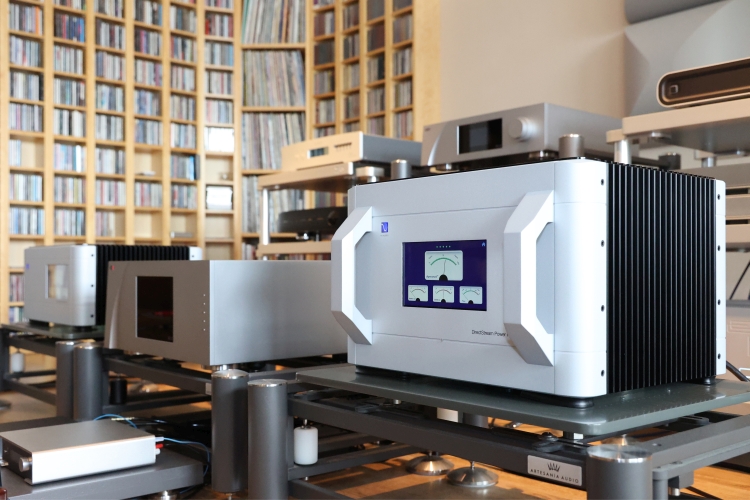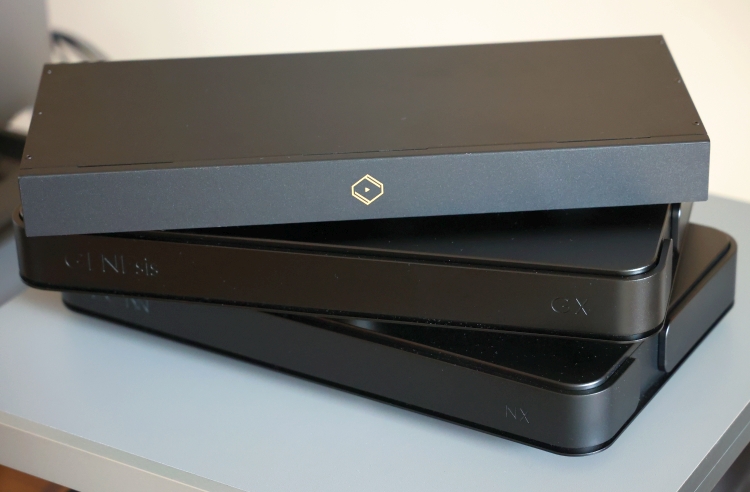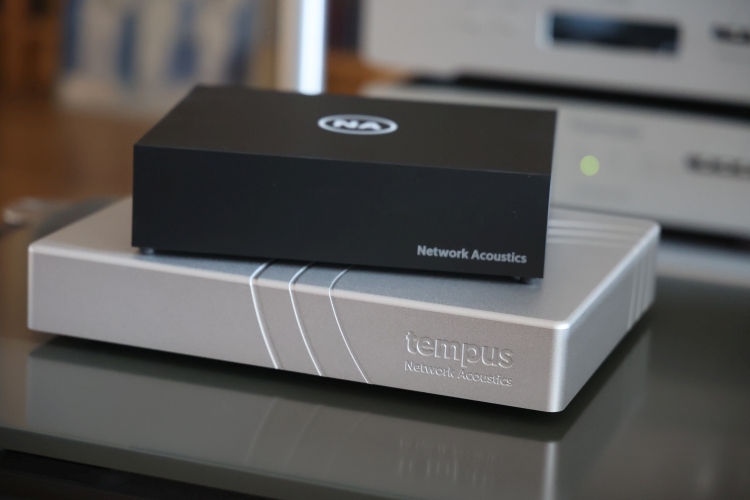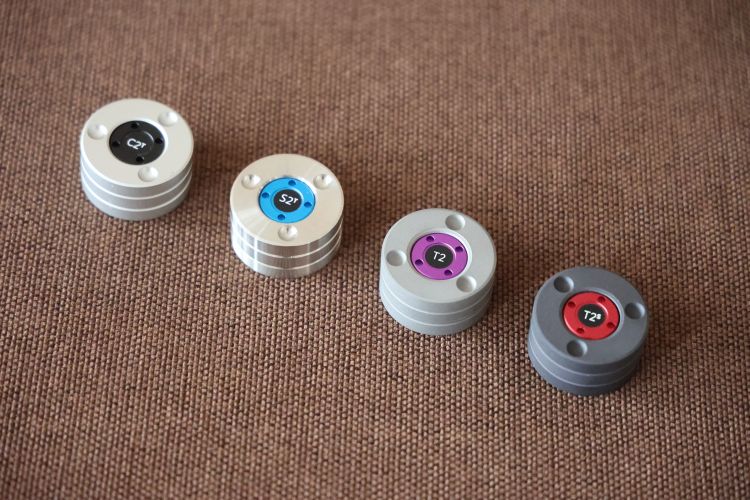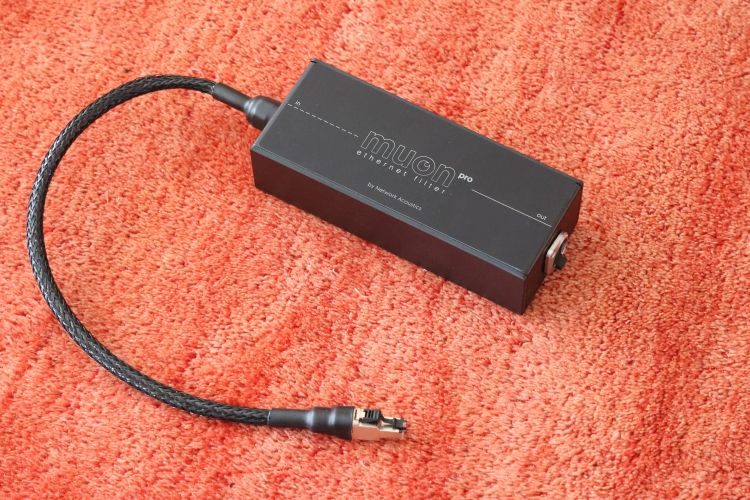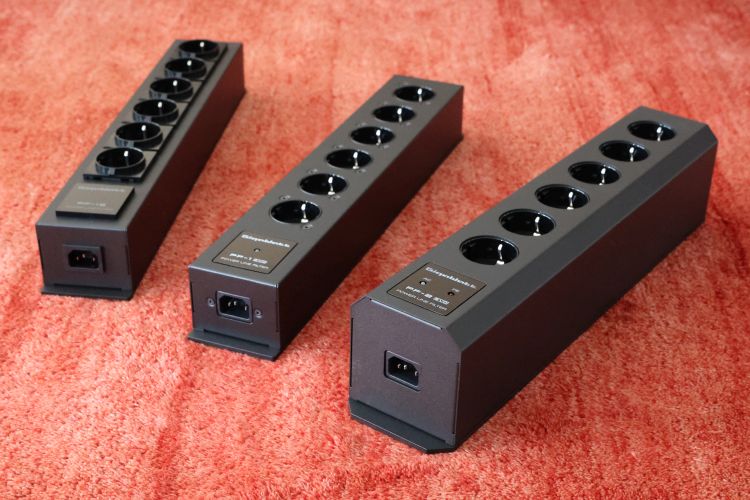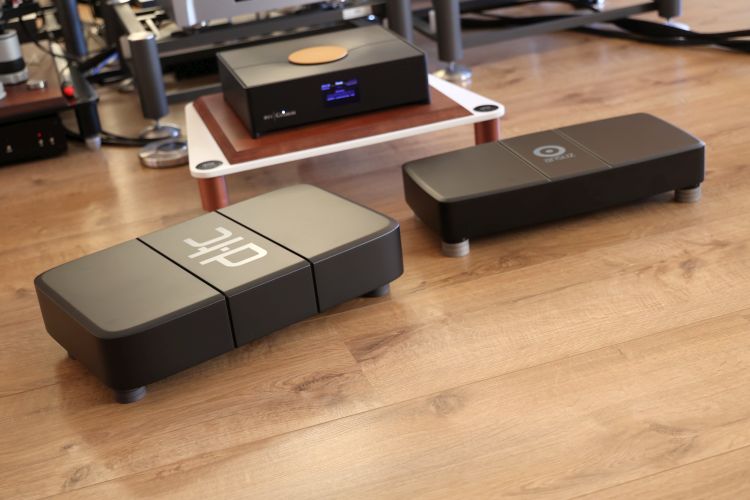Mad Scientist Audio Power Purifier
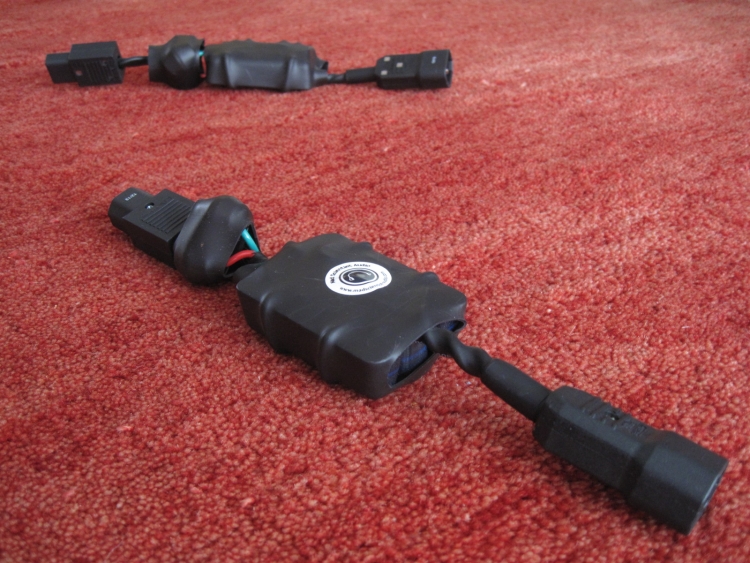
A remarkably effective tweak
After my experience with the Mad Scientist CanOpeners, I was pleasantly surprised by what could be called an advanced development of the original CanOpeners, via BlackDiscus and Black Sticks, into the product under review here: the Power Purifier.
Review samples supplied by Mad Scientist Audio
Retail price: $199 – $379 per piece, depending on options
As reviewed: Power Purifier+ $299
Rebate if buying multiples
Free blackdiscus sample to get a taste of the Power Purifier
30 day money back guarantee
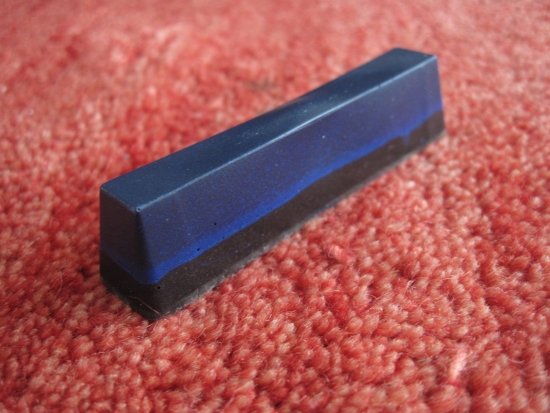
Background
The first samples of Mad Scientist products that Bob Prangnell sent me were the CanOpeners. Although the CanOpeners offered discernable benefits, it was with another products that the effectivity really couldn’t be disputed anymorey: the CupCakes. These CupCakes evolved into even more powerful Black Sticks, which evolved into Blue Sticks. With these Blue Sticks as the main ingredient, Mad Scientist have now released a more “Plug ‘n Play” product that goes by the name of Power Purifier. Unlike the products that went before it, the Power Purifier is a product with a clear application and one cannot go wrong in applying it: simply connect it between your existing power cable and any component you wish to treat. Interestingly, it’s not just audio devices that benefit but video devices as well.
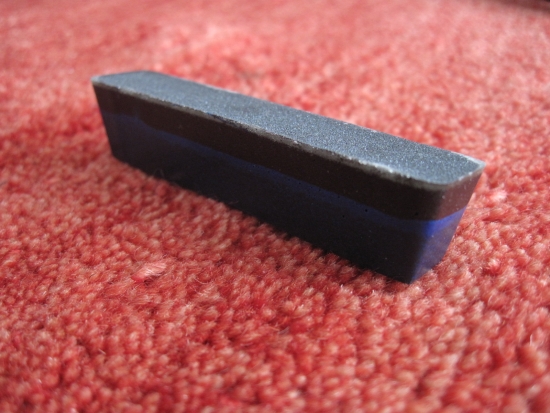
Above: for application in the Power Purifier, 4-5 holes are drilled in these sticks, to allow the wires to be routed through them
So, what is the technique behind this? Below is a summary of the explanations that Bob made earlier. (read the original BlackDiscus review for the entire story.)
“The black-stuff is made from epoxy and a mixture of minerals. But the secret is in the processing. It takes several hours for the composite to cure, and during this time it’s subjected to a variety of fairly extreme things. I built a rig, computer controlled, that does most of the processing. This contains, among other things, what could be described as a mini particle accelerator. It uses tens of thousands of volts (this part really sounds like mad science, as it crackles and hisses while running).
There’s one process that affects the interior of the device, and there’s another process that affects the surface (the rough surface). If you just take a raw BlackDiscus and do not put it through the processing, you get something that looks exactly the same, but has no effect on audio systems.
Incidentally I was testing them against ferrites, like the ones you clip over leads on computer stuff. Boy they sound horrible (the ferrites I mean ;). I think it’s because the ferrites just reflect RF, not kill it, whereas these things do something to actively kill it. After the composite has cured and the high-energy processing is done, they are heat treated. If you think of them as an RF-disrupter you get the idea.”
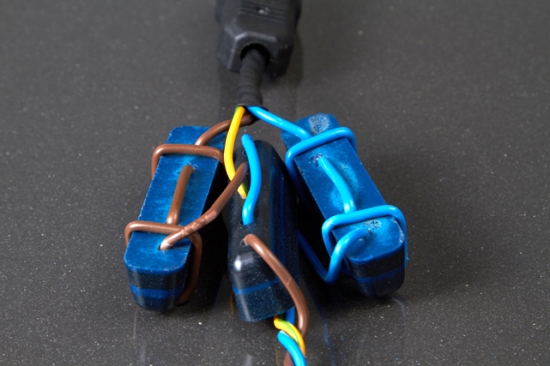
Above: Finished product without shrinkwrap
The above still doesn’t really explain why they work, but you can’t say that Bob is being secretive about the processes behind it! Moreover, on the MadScientist website you can find detailed descriptions for how to assemble your own Power Purifier, based on the Blue Sticks. For me, ultimately, it doesn’t really matter why something works, as long as it does. And work, the Power Purifier does!
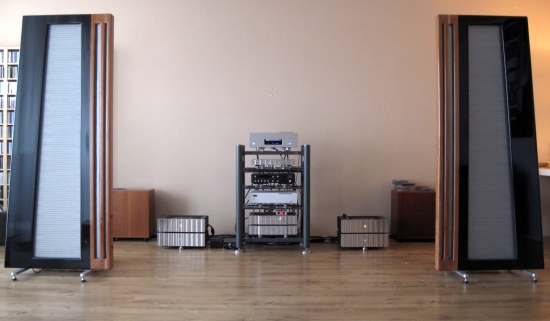
Above: the resident test setup – minus the Esoteric player, which was over for review, and is sadly no longer with me.
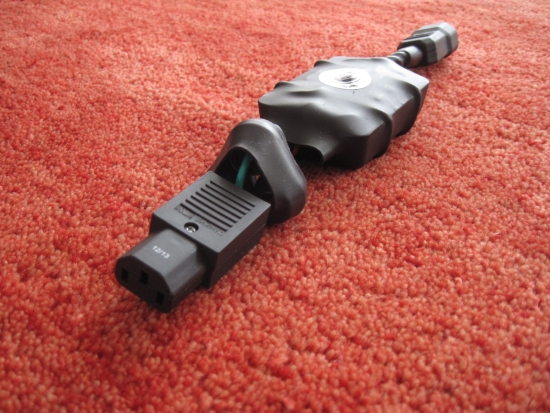
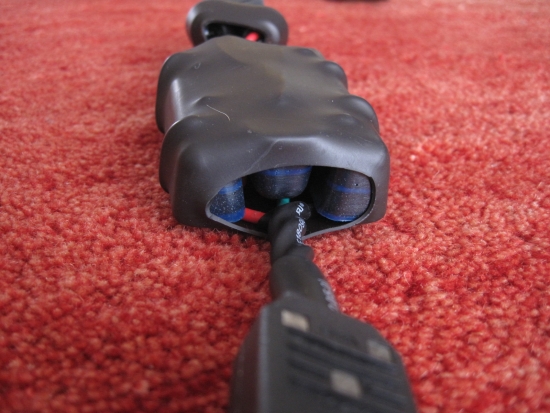
Power Purifier+ and Mark Levinson 390S CD player
First component that I connected a Power Purifier to was my trusty 390S. lately I use this player as a transport into the Rowland Aeris DAC and this is also how I used it while testing the PP. Critics might say that a power filter shouldn’t influence the sound of a CD transport but experience shows that CD transports are definitely sensitive to tweaks like this. Another way of looking at this might be to say that if there is a clear audible effect, then surely it must be one hell of an effective tweak! Case in point: the difference that the PP makes to the sound of this transport is simply astounding: the soundstage became a lot wider, midrange creamier and more luscious and treble, already void of harshness, became even more fluid and airy. The effect is not unlike replacing a standard interlink with a Transparent Reference interlink. I kid you not, the effect is that large. But, als always, audio is a matter of delicate balance and in my case the 390S has already been tweaked to sound more relaxed than it normally would, to balance it out with the lively Aeris DAC. So, without making new tweaks, the addition of the Power Purifier proved a little bit too much in this case, softening the bass transients a little too much. I’m sure that I could tweak the 390S+PP to regain the balance that I like but rather than doing that, I proceeded to another CD player.
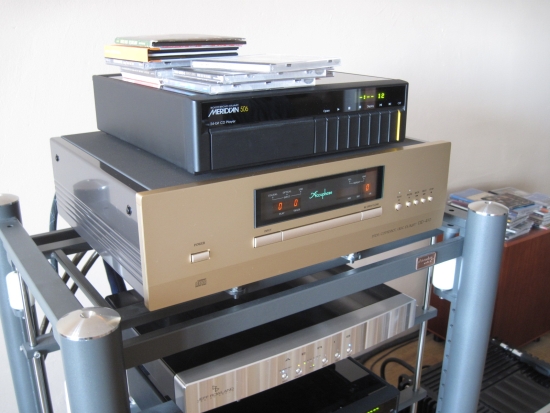
Power Purifier and Meridian 506.24 CD player
As expected, the 506.24, already sounding quite lush and smooth, perhaps went a little overboatd with the addition of the PP+, but the effect was consistent in that the soundstage grew much wider and midrange was more voluptuous. By now a suspicion started to emerge: that if the setup was already leaning toward the forgiving side, then perhaps the addition of a PP was not needed, but that if a system was a little nervous, or more commonly beging referred to as sounding a little digital, then I suspect that a Power Purifier might be a gift sent from heaven.
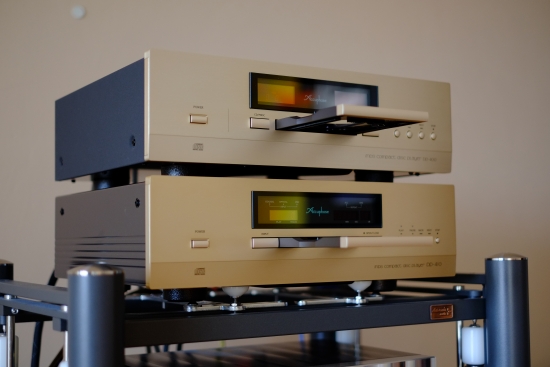
Power Purifier+ and Accuphase DP400 / DP410 CD player
I would definitely not accuse these Accuphase players of sounding digital or unforgiving in any way, but they do sound quite different from my other players. They’re much tighter and more articulate, and don’t have a particularly large soundstage, nor do they portray overly chromatic colours. The DP400 and DP410 sound quite different from each other, so let me give you a short intro.
The DP400 is the more relaxed player: is has a wider soundstage and a more recessed focus. It has sweeter treble and less powerful bass, and is overall less dynamic and less articulate than the DP410. I have learned in a previous encounter with this player that it doesn’t really like my Transparent XLR cables, nor the smooth-sounding Harmonic Technology powercord.
The DP410 is the more lively player. Bass is more articulate and has more drive, midrange is more forward, as is the soundstage, albeit a lot less wide than with the DP400, and treble is a little drier. Overall the DP410 is more controlled. I guess you already can tell where this is leading to, am I wrong?
Adding the Power Purifier+
The DP400 as expected sounded even more relaxed and smooth and because in comparison to my usual suspects, the player is a little undernourished tonally, I found it to have gained more musicality due to the now more saturated colours. Overall though, the reduced speed and more softened transients were too much for this player and after a little while one starts to miss the action a little.
The DP410 responded differently: because its starting position is shifted, it remained upbeat and articulate, lost little in terms of attack and just gained the proper amount of “filling in the gaps”, to make for a more musically engaging experience. I actually preferred the DP410 with the Power Purifier+.
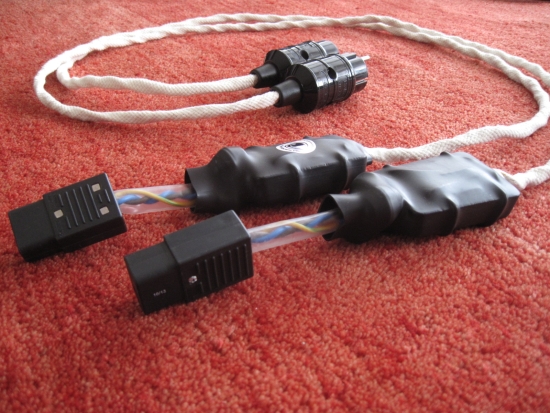
Powercable version of the Power Purifier+
In speaking with Bob about these products and their application, we talked about using them for my Rowland monoblocks as well and because they don’t use the standard 16A IEC standard, but a 20A version, and I use very standard Belden cables with these amps, gradually the idea formed to make powercable versions of the Power Purifiers. By simply extending one end of the wires to the PP, we would bypass one transfer and a set of connectors, making for a more efficient product.
The cables were connected to my Model sixes, in place of the Beldens, into the same positions of the extensionblock and after running in for a while, listening began. The effect was as experienced above with the regular PP+ versions, with once again a wider soundstage and a more voluptuous midrange and more fluidity, but this time less dramatic, which in my setup is a good thing. Bass transients and overall attack was reduced but not by as much as with the Levinson and Meridian players. Overall, this was a much better balance. Why? I’m afraid there are many reasons, starting with the fact that the sixes use battery power supplies and ending with the fact that we’re not just adding a Power Purifier but replacing the powercord as well. But the bottom line is that these Power Purifier cables sound ridiculously good. They’re much better than they have a right to be, considering they’re made of standard bulk wire and use standard plugs. Honestly: the audible effect is of the same magnitude of replacing speaker cables, or an interlink, musically bringing the system to another level. If it’s not the esoteric cable material or the connectors with 16 layers of different plating. the magic must thus simply be in the application of the Power Purifier elements themselves.
Ultimately, I think I may just have my system sounding spot-on. And even if removing the Power Purifiers makes the system sound comparatively leaner and drier, I don’t mind this. This is not to say that a Power Purifier won’t work for you as admittedly my system can sound a little polite already, and it doesn’t need further polishing. It just means that as always, audio is a matter of balance.
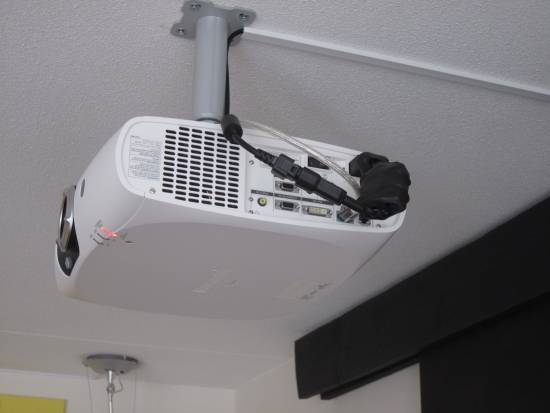
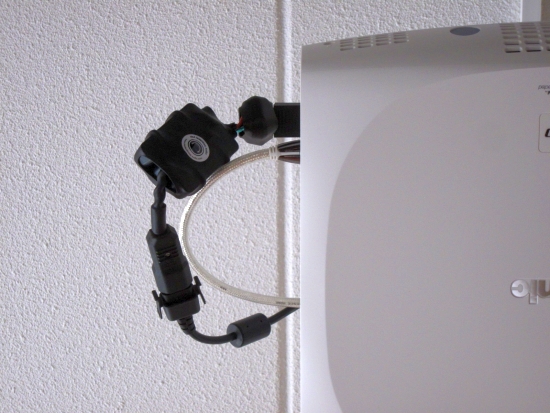
Video application of the Power Purifier+
Bob already informed me that clients had reported good results with using a Power Purifier with video products. Now, I have been hearing similar things about other power conditioning products but never got around to testing this. Now that I have a nice video projector, it seemed like the perfect moment to start investigating this. Connected in line with the normal power cable, I was surprised to find that the Power Purifier+ is indeed beneficiary for the video signal. I particularly payed attention to sharpness and noise, but these areas showed no difference whatsoever. It was in the colours and depth of image where the improvements took place. It’s difficult to describe but somehow the colours look deeper and more convincing with the PP+ in place. Mind you this is not a matter of upping the chroma as I’ve tried that: it merely oversaturates the colours, leading to a red-ish hue. Adding the PP+ is different in that it invigourates the colours, without oversaturating them. Another effect that I noted was that I felt the image to be more analogous, more agreeable for my eyes. What that is exactly I cannot say. I can only conlude that the projector, being a complicated DLP LED/Laser hybrid, is apparently sensitive to power conditions. It’s in this position that I’m not letting go of the PP+: it will stay firmly in place!
